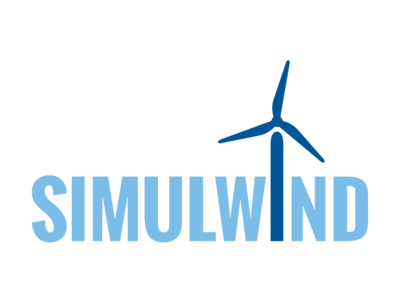
The SIMULWIND simulator has been further developed as part of the Erasmus+ project WindEXT. From June 2022, version 2.0 of the simulator will be available for download via the link below. Further information available on the WindEXT project homepage.
Processor Intel Core i9-9900k
Base board Gigabyte Z390 Aorus Pro WiFi
RAM Memory Corsair Vengeance LPX 16Gb 3000MHz (4x8GB)
Graphic Card Nvidia RTX 2070
3GB free space
e.g. HTC VIVE Pro Full Kit Virtual Reality System

Project:
SIMULWIND is a European project about training for operation and maintenance personnel for wind energy farms, aiming at specifically developing a simulator able to show all main faults and solutions that can be found in both wind turbines and wind farms. This tool will be open to various professionals in the field.
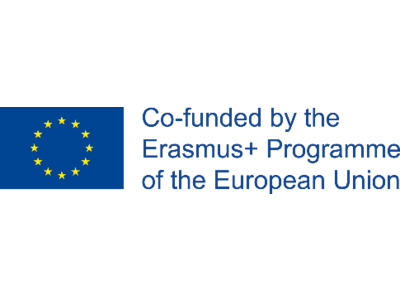
Launched in December 2017, SIMULWIND is an ambitious European funded project aiming at developing a Wind Turbine Generator (WTG) maintenance simulator. It will be used in the training of operation and maintenance (O&M) workers. The project ended in December 2019.
In line with the market tendency to use digital tools, the simulator will be able to deal with all the main faults, solutions and maintenance procedures that can be found in wind turbines and farms. The main challenge of the project is to create a basic simulator of general use which can later be improved by anyone with new technologies and maintenance procedures. Initially thought for onshore windfarms, it can also be extended in the future for offshore installations.
SIMULWIND is developing a tool - designed by the company MONSUTON- that will simulate the main faults and maintenance procedures of a wind turbine.
This project follows the wind industry priority for a digital transformation of the sector. It tries to answer some of the challenges that currently impact the wind farms operation: the need of skilled personnel and new operational modes based on the projects useful life extension and the reduction of variable costs.
The simulator will present specific situations and cases that may occur during the operation of a wind farm. This represents a further step in training operation and maintenance technicians, as they would be able to test real life situations and concepts acquired in different training modules. This step offers the possibility to know the details of a wind turbine before actually starting working onsite, which means a great advancement as it is not always an easy and affordable task in the training phase, particularly for offshore wind turbines.
The SIMULWIND simulator has been further developed as part of the Erasmus+ project WindEXT. From June 2022, version 2.0 of the simulator will be available for download via the link below. Further information is available on the WindEXT project homepage.
The current Version of 3D model used actually in the Simulator SIMULWIND can be downloaded here.
RSC (former BZEE), AEE and ANEV each had to hold a webinar. In it they had to demonstrate and present the simulator SIMULWIND. The webinars can be viewed here. They are available in German, Spanish and Italian.
The main innovation brought by the project is to develop a standard tool that could be updated with the newest wind turbine models in order to provide technicians with the best up to date training. The solution adopted is the functional design which will allow the simulator to specify the elements involved in the selected maintenance procedures and add new procedures when necessary.
The simulator itself highlights the map of possible combination of materials, tools and Personal Protection Equipment (PPE). It contains various actions and its results, as well as technical elements of interaction. It will allows as well to complete each digital action with specific videos, messages and texts to reinforce the simulator capabilities.
The final product has to be as simple as possible. It will be used by stakeholders with different levels: administrator, teacher and users. The beta version was finished in September 2019. Pilot tests took place after September 2019. The final version of SIMULWIND to be used by external persons is ready to download.
Before starting a tutorial, the user should register and specify its role (administrator, teacher or user). For example, if the user is the administrator, different options will be offered that will allow to change loaded practices and add new practices. For the others, teacher or user, they will select one of the available practices, of a total of three in the first phase of the project (lock of the high-speed shaft, high speed shaft coupling substitution, replacement of the motor of the yaw moto-redactor) as well as the difficulty of carrying it out (easy, medium, hard). When the simulator starts, the user should select the tools, materials and the necessary Personal Protection Equipment (PPE) and then he/she will move the wind farm room to get access to the nacelle. Once the piece on which one wants to operate is identified, the corresponding tool is to be applied either in isolation or in combination with the necessary material. In this section the rest of materials, videos and texts, will be included to complete each of the existing procedures.
Another innovation in the project is represented by the wind turbine model (WTG), a standard one based on a typical layout and using a double-fed induction generator (DFIG) and a classical structure of the main frame, pitch actuator, active yaw and tower access (see figure below). The WTG model at the basis of the simulator is nearly finalised, with some components still to be integrated: hub, main frame, nacelle cover, tower and access platform. It should be used to facilitate the use of other types of WTG.
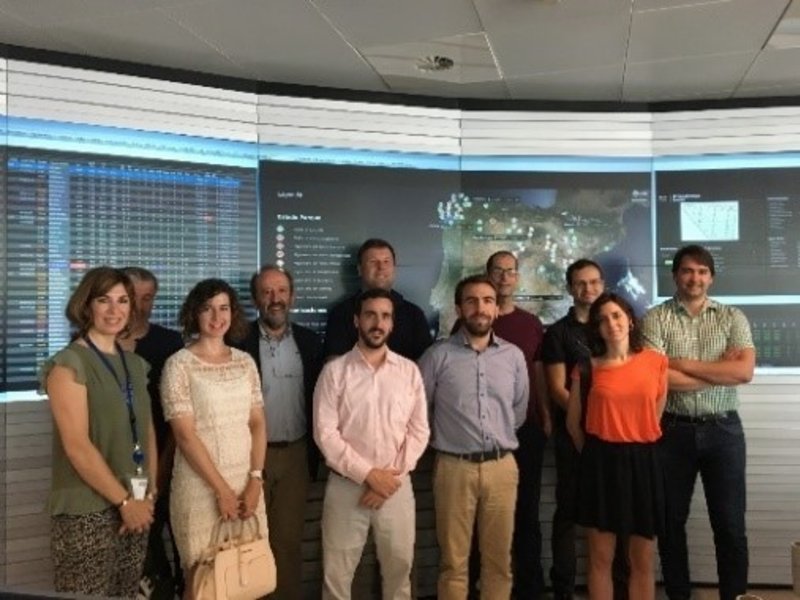
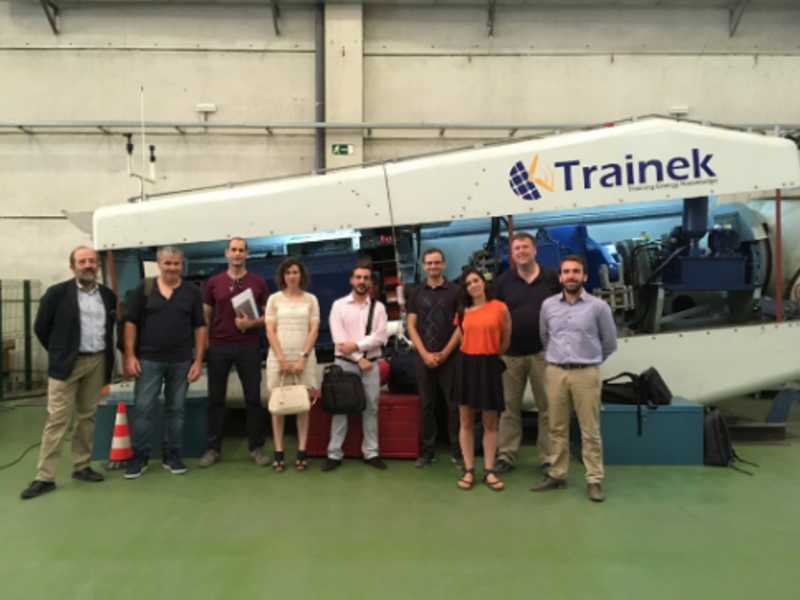
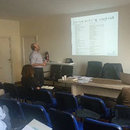
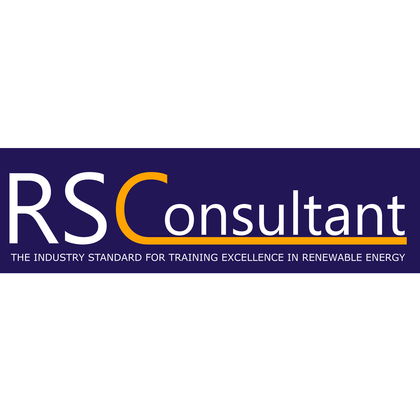


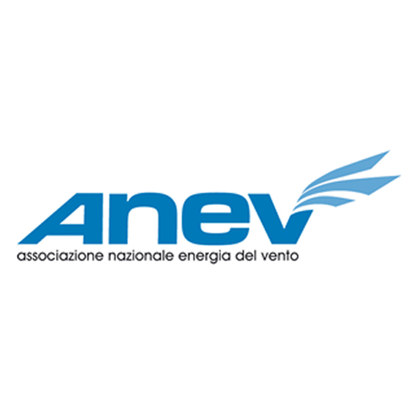

Renewable Skills & Consultant GmbH (former BZEE Academy GmbH), Project Coordinator
www.rs-consultant.com
AEE, Spanish Wind Energy Association
www.aeeolica.org/en
SGS TECNOS
www.sgs.es/en
ANEV, Italian Wind Energy Association
www.anev.org
WindEurope
windeurope.org

The European Commission support for the production of this publication does not constitute an endorsement of the contents which reflects the views only of the authors, and the Commission cannot be held responsible for any use which may be made of the information contained therein.
The SIMULWIND project is funded by the ErasmusPlus project.
Reports Multiplier Events
Reports Pilot Test
Newsletter
Leatflet